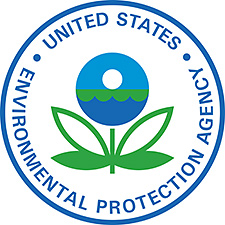 One NEWSmaker has been making headlines for more than 25 years in the HVACR industry. In the 1980s, the U.S. Environmental Protection Agency (EPA) became the U.S.’s regulatory and enforcement agency, implementing the Montreal Protocol and congressional mandates on ozone-depleting substances, including hydrochlorofluorocarbon (HCFC)-22.
One NEWSmaker has been making headlines for more than 25 years in the HVACR industry. In the 1980s, the U.S. Environmental Protection Agency (EPA) became the U.S.’s regulatory and enforcement agency, implementing the Montreal Protocol and congressional mandates on ozone-depleting substances, including hydrochlorofluorocarbon (HCFC)-22.
In 2014, the EPA made it’s biggest splash on Oct. 16, when Gina McCarthy, administrator, EPA, signed the final rule pertaining to allowances for virgin production and importation of HCFCs, primarily R-22, for 2015 through 2019.
While the industry has long known that the EPA had planned to stop the manufacture of R-22 in 2020, it was the drastic reduction between 2014 and 2015 that made news. With 51 million pounds allowed in 2014, the EPA carefully examined step down options for the remaining years of the phaseout and opted for a significant immediate reduction rather than an equal cut over several years.
The federal agency was looking at allowing as much as 36 million pounds of new and imported R-22 in 2015; but, instead limited the total to 22 million pounds — making that almost a 60 percent drop off from 2014. The step down will continue with 18 million pounds of new and imported R-22 allowed in 2016, 13 million pounds in 2017, 9 million in 2018, and 4 million in 2019. No newly produced or imported R-22 will be allowed in the U.S. on or after Jan. 1, 2020.
The decision was designed to get contractors and service technicians out of the habit of just going to their local supply houses to pick up readily available new canisters of the refrigerant. Instead, the agency wants them to leak-tighten customers’ systems, bring existing supplies of used R-22 back for reclamation to ARI-700 purity standards, and/or use readily available hydrofluorocarbon (HFC) retrofit refrigerants — all options designed to greatly reduce environmental damage that can result from a leaking system.
Also operating in the substrata was the fact that an undetermined, but nevertheless large, amount of R-22 has been stockpiled throughout the industry. A big drop off in new refrigerant means that stockpile will have to be drawn down. And playing into the dynamics is the fact that for approximately five years, no new R-22 systems have entered the market other than some replacement components that have been dry shipped. That means there is currently a finite amount of R-22 systems to be serviced, and every time such systems are decommissioned or retrofitted with an HFC, there’s one less system that needs R-22.
The EPA’s decision was designed to find a balance between supply and demand when it comes to R-22. For the most part, those in the industry anticipate price spikes and spot shortages of R-22 into 2015 before the market stabilizes.
Publication date: 12/22/2014
Want more HVAC industry news and information? Join The NEWS on Facebook, Twitter, and LinkedIn today!



Report Abusive Comment